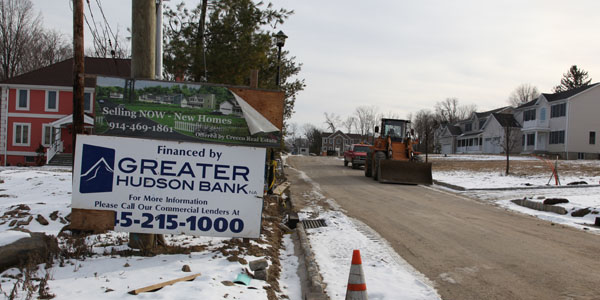
Home builders are hopeful 2013 will be the year of the comeback in their industry, and so far they have reason to be: The U.S. Department of Commerce revealed a 3.6 percent jump in building permits, the biggest increase since 2008 and the start of the Great Recession.
Following that trend, single-family new home building permits were up 15 percent over 2011 in both the New York-Northern New Jersey area and the Hudson Valley metro area, according to the Builders Association of Hudson Valley (BAHV).
New York home builders are still cautiously optimistic about their prospects in the new year. The road for many builders has recently been tripped up with obstacles. Despite seeing gains in 2012, the uptick in building stalled in the latter part of the year, as Hurricane Sandy proved to be an unexpected hurdle.
In the aftermath of the storm, some home building companies are seizing the opportunity as homeowners look to rebuild. Westchester Modular Homes Inc., an employee-owned construction company in Wingdale, advertises services to help homeowners rebuild after Sandy on its website. The company is offering a Hurricane Sandy Informational Seminar Jan. 19.
John Colucci, vice president of sales and marketing for Westchester Modular Homes, said the company has already had a strong response. “Since Sandy we have received some very firm contracts on rebuilding homes,” he said. “And the hits on my website have gone up dramatically. We used to get 3,000 hits per week; we”™re now getting 5,000.”
Before the recent rise in interest, Westchester Modular suffered a 50 percent drop in home teardowns and rebuilds, a significant part of their business. In 2011, Colucci said they rebuilt 40 homes in the New York metro and Boston areas. In 2012, that number rose to about 50.
In the Hudson Valley, home builders have been waiting for signs of life, according to Scott Wohl, executive officer of BAHV. Wohl said Hurricane Sandy was “a bit of a snafu” for the home-building industry. And, he noted, coming out of the storm, there”™s going to be an impact to the industry that”™s not all positive. “It”™s probably going to drive up the cost of materials somewhat,” he said. “And make it difficult to keep the costs low on construction, but it also is going to reinvigorate the need for construction.”
The need for construction has been growing for a while, Wohl admitted, long before Hurricane Sandy. Wohl said even during the Great Recession, there were people in Dutchess, Putnam and Westchester counties who wanted to buy homes, but had limited options given the aging housing stock. According to BAHV, the median age of a home is 60 years old and is not up to the latest building codes and energy efficiency standards.
Rebuilding and replacing homes in New York has been challenging in recent years, in part because of the red tape that”™s specific to the state. It”™s enough to make Lewis Dubuque, executive vice president of the New York State Builders Association (NYSBA), a little wary of the slight increase in numbers related to home building.
“I think we still need to ease up on regulations,” Dubuque said. “We”™re growing towards a more green infrastructure and I mean it sounds nice, but it”™s not entirely practical with people moving toward smaller lot sizes.” He added that the NYSBA is concerned about the New York state code council considering a mandate for fire sprinklers in one- and two-family homes. The organization projects the cost of compliance would add $7,000 to $10,000 to the price tag of a home, and that could spark another decline in the housing market statewide.
But Dubuque said Gov. Andrew Cuomo”™s lean toward lower taxes and regulations could translate into a healthier building industry in the coming year. “We have a governor who”™s going in the right direction so, there are signs of hope.”




















